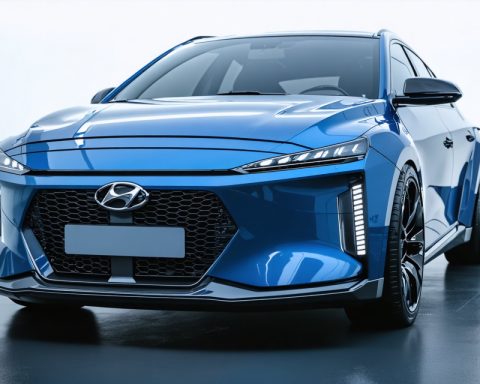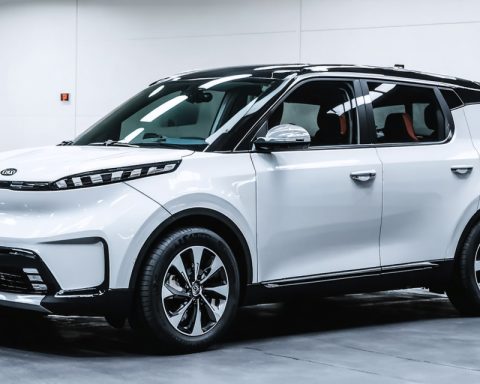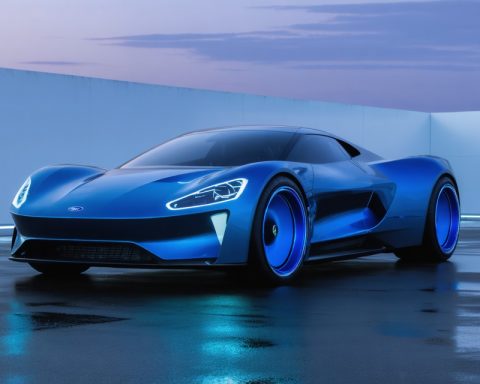- Porsche is spearheading sustainable innovation through a multi-phase project to recycle EV batteries into valuable raw materials.
- “Black mass” from old batteries is rich in essential minerals like nickel, cobalt, manganese, and lithium, enabling a circular supply model.
- The initiative has already generated 65 tonnes of black mass, which yields high-purity elements for new Porsche vehicles.
- Porsche’s approach addresses raw material scarcity, contributing to a circular economy and ensuring quality standards for new batteries.
- By preparing for 2031 EU battery regulations, Porsche aims to lead in sustainability and supply chain resilience.
- This project emphasizes Porsche’s commitment to reducing its ecological footprint and positioning itself as an environmentally conscious automotive leader.
- The initiative reflects Porsche’s dedication to innovation, with a focus on stewardship and transforming waste into reimagined resources.
Porsche is charging towards the forefront of sustainable automotive innovation with its pioneering multi-phase pilot project to recycle high-voltage electric vehicle (EV) batteries. This ambitious initiative transforms old batteries into valuable raw materials, setting a new benchmark in environmental responsibility and supply chain resilience.
Imagine a future where the discard pile of used batteries becomes the goldmine of tomorrow’s electric cars. At the heart of this transformation lies “black mass,” a mysterious-sounding substance forged from the shredded remains of old EV batteries. This granulate, rich with essential minerals like nickel, cobalt, manganese, and lithium, holds the key to Porsche’s ambitious goal—a circular supply model that may redefine the industry’s approach to resource management.
Porsche’s innovative recycling process has already produced an impressive 65 tonnes of black mass from development vehicle batteries. But the magic doesn’t stop there. Through meticulous refinement, this mass yields high-purity elements, ready to power the next generation of Porsche vehicles. Every particle promises consistency and cleanliness, ensuring that each cell meets Porsche’s stringent quality standards.
As vehicles around the world hum to life, many now face the looming challenge of raw material scarcity. Porsche, however, sees opportunity in the challenge. The project’s final phase plans to incorporate recycled content in new battery cells for real-world testing in future models, embedding the principles of a circular economy into its core production strategy.
“Pioneering sustainability,” Porsche Executive Barbara Frenkel states, lies at the project’s heart. By entwining recycling within the company’s pipeline, Porsche not only closes the loop on vehicle production but also safeguards its supply chain against geopolitical turbulence and environmental concerns.
With a strategic eye on upcoming 2031 EU battery regulations, Porsche is already preemptively adapting to future demands for recycled content and traceability. The company’s foresight in expanding this project illustrates its commitment not only to reducing its ecological footprint but also to cementing its role as an environmentally conscious leader in the automotive world.
In this drive toward a greener future, Porsche demonstrates that the road ahead is not just about speed and luxury, but also about stewardship and innovation. As the dust settles on the recycling floor, the message is clear: waste is a thing of the past, and the age of reimagined resources is here to electrify the present.
The Revolutionary Impact of Porsche’s Battery Recycling Pioneer Project
Overview of Porsche’s Revolutionary Battery Recycling Initiative
Porsche is taking bold strides in sustainable automotive innovation through its groundbreaking multi-phase pilot project aimed at recycling high-voltage electric vehicle (EV) batteries. This forward-thinking initiative is transforming used batteries into valuable raw materials, setting a new standard in environmental responsibility and enhancing supply chain resilience. At the core of this initiative is the production of “black mass,” a granulate rich with essential minerals such as nickel, cobalt, manganese, and lithium. These materials are crucial for developing a circular supply model, which could potentially revolutionize how the automotive industry manages resources.
How Porsche’s Battery Recycling Works
1. Collection and Shredding: Old, spent batteries from development vehicles are collected and shredded to create “black mass.”
2. Refinement Process: The black mass undergoes meticulous refinement to extract high-purity elements.
3. Reuse: These purified elements are then used to manufacture new battery cells, ensuring that each component meets Porsche’s stringent quality standards.
4. Real-world Testing: The recycled content is incorporated into new battery cells for deployment in future vehicle models, integrating recycling principles into Porsche’s core production strategy.
Real-World Use Cases and Predictions
– Supply Chain Resilience: By reusing materials from old batteries, Porsche mitigates the risks associated with raw material scarcity and geopolitical disruptions.
– Economic Efficiency: Reducing reliance on newly mined resources could decrease costs and pricing volatility in the battery production sector.
– Environmental Impact: Recycling supports a reduction in mining activities, limiting adverse environmental consequences and resource depletion.
Future Market Impact and Industry Trends
The global automotive industry is increasingly transitioning towards sustainability. Porsche’s project anticipates the rising demand for eco-friendly manufacturing processes. According to MarketsandMarkets, the EV battery recycling market is expected to grow to USD 12.3 billion by 2025. Porsche’s proactive adaptation to EU 2031 battery regulations reflects the trend towards increased sustainability and traceability in manufacturing.
Pros and Cons Overview
Pros:
– Sustainability: Significant reduction in environmental impact by minimizing waste and resource depletion.
– Innovation in Resource Management: Pioneering a circular economy model within the automotive industry.
– Quality Assurance: Ensured consistency and cleanliness of recycled elements for better performance.
Cons:
– Initial Costs: Significant upfront investment required in technology and infrastructure for recycling processes.
– Technological Challenges: Complexities involved in refining high-purity elements from shredded batteries.
Actionable Recommendations
– Support EV Recycling: Consider buying vehicles from manufacturers like Porsche that prioritize sustainability efforts.
– Stay Informed: Follow industry trends to understand the impact of new regulations on automotive manufacturing.
– Adopt Sustainable Practices: Encourage recycling of electronic waste at a personal level to support a circular economy.
For more innovations in sustainable automotive practices, visit Porsche.
Conclusion
Porsche’s initiative sets a precedent for sustainability in the automotive sector, combining innovation with environmental stewardship. By focusing on battery recycling, Porsche not only reduces its ecological footprint but also strengthens its supply chain against future challenges. As the automotive world shifts towards eco-friendly solutions, this pioneering approach marks a significant step forward in reimagining resource management for a sustainable future.























